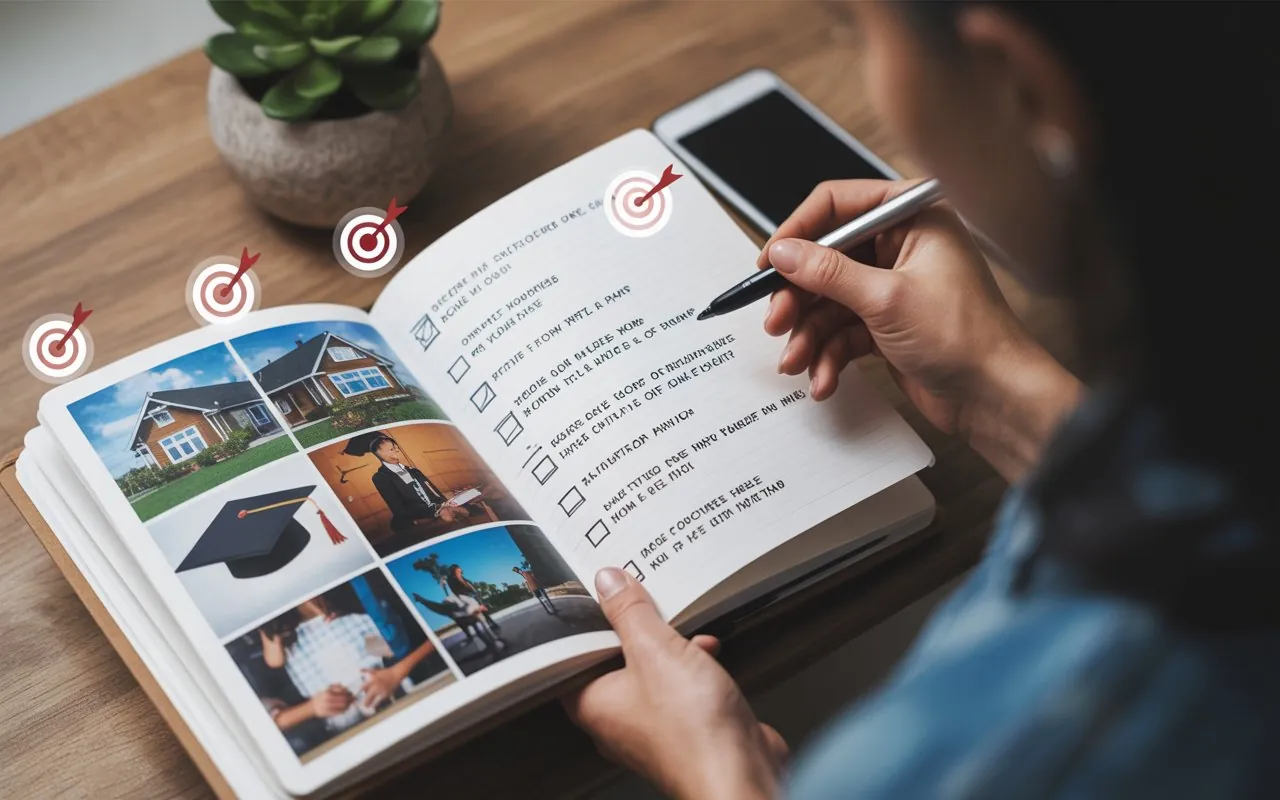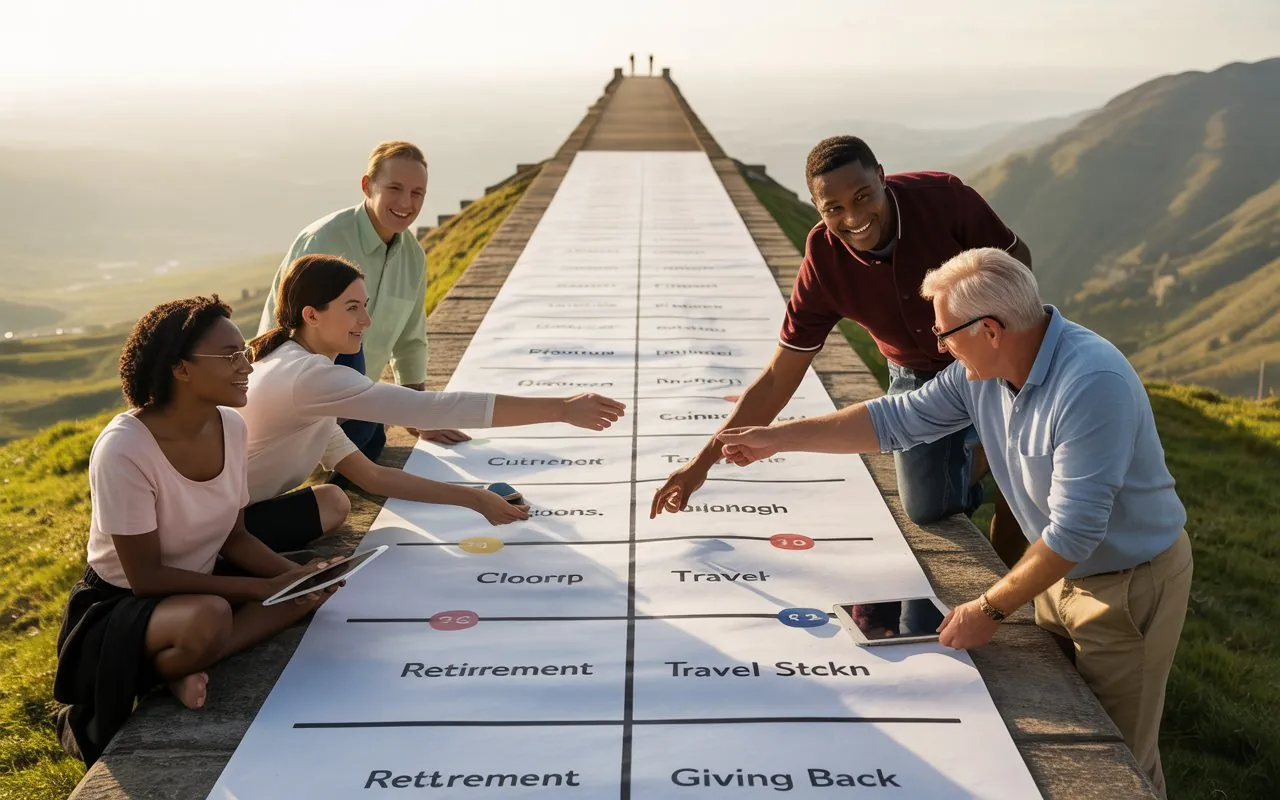In a world full of financial uncertainty, everyone dreams of having true control and freedom over their money. Searching for the seven steps to financial freedom means you are ready to break the cycle of anxiety, endless bills, and limited choices—and finally step onto a path that builds lasting wealth. Financial freedom is not just a distant goal for the privileged or financially savvy; it is achievable for anyone, anywhere, regardless of current income, background, or starting point.
Imagine waking up each day knowing your essentials are covered, your future is secure, and you can make life decisions based on your desires, not financial fears. This is the real meaning of financial independence. It’s about building a safety net, creating opportunities, and laying a solid foundation so you can support loved ones, weather emergencies with confidence, pursue your dreams, and even give back to your community. Financial freedom gives you the power to turn “I wish” into “I can.”
This comprehensive, step-by-step guide is designed for real people around the world. Whether you’re in bustling Lagos, vibrant Mumbai, or anywhere in between, these seven steps offer actionable strategies, inspiring examples, and timeless advice to help you regain control and thrive—no matter your starting point. It’s time to rewrite your story and take charge of your financial destiny.
What Is Financial Freedom, and Why Is It the Most Important Goal?

Financial freedom means having sufficient income and assets that work for you—so you never feel trapped by bills, reliant on a paycheck, or forced to make compromises you don’t want. It’s the difference between surviving and thriving, between making decisions out of desire instead of desperation.
At its core, financial freedom is about choices:
- The freedom to travel
- To help family and community
- To start a business or retire early
- To weather emergencies without panic
- To live without anxiety about survival
“Financial freedom means living without financial stress. Reaching this point typically requires paying off debt, saving money, and making smart investments.”
Many people think financial independence is for the ultra-rich. In reality, it’s built slowly—one good habit at a time.
The Seven Steps to Financial Freedom: An In-Depth, Practical Approach
These foundational steps are universal, flexible, and proven. Utilize them as a roadmap for your journey, adapting as needed for local economies or personal circumstances.
Step 1: Get Crystal Clear About Your Financial Goals

Why Goal-Setting Is the Starting Line for Wealth
You can’t reach financial freedom if you don’t know what it looks like for you. For some, it’s retiring at 50; for others, it’s building a college fund, owning a home, or traveling the world. Vague goals (“More money”) fail to motivate, while specific, actionable targets create focus and momentum.
Action Steps:
- Define Your Version of Financial Freedom: Is it the ability to say no at work? Owning a second property? Funding your children’s education? Write it down!
- Make It SMART: Specific, Measurable, Achievable, Relevant, Time-bound.
- Prioritize: List goals by urgency—debt relief, emergency fund, investing, etc.
- Break Goals Into Micro-Steps: Don’t write “buy a house”; break it into “save $15,000 down payment,” then “research mortgage rates,” etc.
Example (Nigeria):
Goal: Build ₦5,000,000 in investments by 2030. Micro-steps: Save ₦100,000 quarterly, learn about mutual funds, open a brokerage account.
“Setting financial goals is the first step to financial independence. Make goals specific and measurable.”
Step 2: Track Your Spending and Net Worth Diligently

Why Tracking Is the Foundation of Financial Control
You can’t manage what you don’t measure. For most, the simple act of tracking expenses is a revelation—highlighting waste, unnecessary subscriptions, or “leakage” that silently undermines your progress.
How to Track Like a Pro:
- Document Every Expense: Keep all receipts, use an app (e.g., Mint, YNAB), or just a basic notebook.
- Review Monthly Statements: Bank accounts, credit cards, mobile money, and other sources.
- Catalogue All Assets and Debts: Your net worth is assets (accounts, property, business) minus liabilities (debts, loans).
- Categorize Spending: Group expenses (food, rent, transport, entertainment) to spot patterns.
Practical Example
A teacher in Lagos spends a week jotting every naira spent. To their surprise, daily snacks and rideshare add up to ₦30,000/month—money that can be redirected to savings.
Deep Dive—What to Do With the Data
- Identify “pain points” (e.g., subscriptions you don’t use, groceries that go to waste)
- Set up autofill categories in your tracking tool to save time
- Calculate your “runway” (number of months you can survive without new income based on assets vs. expenses)
“Coming to terms with how much you spend is essential but it’s also ‘the scariest step.’ But once you take that step, you’ve done the hard part.”
Step 3: Build (and Stick to) a Realistic, Flexible Budget
Why a Budget Is Your Wealth Blueprint
A budget gives your money purpose. Rather than wondering at the end of the month where your salary has vanished, a budget tells every naira, dollar, or pound exactly where to go.
How to Build an Effective Budget
- Start With Income: List all sources, including side hustles, dividends, and other cash flows.
- Group Expenses by “Needs,” “Wants,” and “Savings/Debt.”
- Apply a Simple Rule: Try the 50/30/20 model (50% needs, 30% wants, 20% savings/debt).
- Automate Regular Payments: Schedule savings contributions and debt payments.
- Review and Adjust Monthly: Budgets aren’t set in stone; review regularly to account for changes in income or costs.
Tips for Sticking to Your Budget
- Use visual reminders (charts, graphs, progress bars)
- Reward yourself for milestones (e.g., a special meal after 3 months of perfect budgeting)
- Share your progress with family or a trusted friend/accountability partner
Example
An entrepreneur in India uses an Excel sheet and free apps like Wallet or Spending Tracker to monitor and stay ahead of his budget. He reviews weekly and adjusts for income spikes or unexpected costs.
“Creating a budget is the foundation for achieving financial freedom. It helps you track your income, expenses, and savings, ensuring you live within your means.”
Step 4: Eliminate Debt and Minimize Liabilities

Debt: The Single Greatest Threat to Wealth
Debt drains wealth at an accelerated rate due to compound interest. Every outstanding loan carves out a bigger chunk of your future capacity for saving and investing. Prioritizing debt payoff, especially high-interest debt, frees up cash for growth.
How to Tackle Debt, Step by Step
- List All Debts: Include credit cards, payday loans, student loans, mortgages, and informal debts (e.g. borrowed from friends/family).
- Record Interest Rates & Minimum Payments: Focus on highest-interest debts.
- Choose a Repayment Strategy:
- Avalanche Method: Pay off highest-interest debt first (saves the most in interest).
- Snowball Method: Pay smallest debts first (provides quick wins and motivation).
- Negotiate Where Possible: Ask lenders for lower rates or payment plans.
- Avoid New Bad Debt: Only take on loans for appreciating assets (e.g., a business, education, real estate).
Example
A recent grad in Kenya uses the debt snowball method, starting with a ₦85,000 loan from university, making extra payments monthly, and crossing each debt off the list one by one.
Digging Deeper—Advanced Debt Management
- Consider debt consolidation for multiple high-interest debts.
- Track your credit score online; improving it can mean lower rates.
- Whenever you free up cash, redirect it to the next priority—saving or investment.
“Debt is one of the biggest obstacles to financial independence … taking steps to minimize debt is important to setting yourself on the road to financial independence.”
Step 5: Create a Meaningful Emergency Fund—Your Financial Lifeline
Why the Emergency Fund Is Non-Negotiable
An emergency fund isn’t just a “nice to have”—it’s a shield that prevents moments of crisis from wrecking years of progress. Life throws curveballs—sickness, job loss, family emergencies. Having cash set aside keeps you from going back into debt.
How Much Should You Save?
- Aim for 3–6 Months of Expenses: This is the global recommendation, but start wherever you can.
- Set Micro-Goals: Even ₦50,000-100,000 can prevent small setbacks from ballooning.
- Keep It Accessible: Use an interest-earning, flexible account, not something “locked up.”
Example
A freelance designer in Ghana saves 10% from every client payment in a dedicated savings account. After six months, she has enough to cover two months’ rent, food, and essentials.
Advanced Tips
- Where interest rates allow, park your emergency fund in a money market fund or high-yield savings account.
- Review the fund annually as your expenses rise or fall.
“An emergency fund helps cover unexpected expenses, such as car repairs, medical bills, or a sudden loss of income — without having to rely on credit cards or loans. If this seems like an intimidating goal, start small.”
Step 6: Invest and Build Multiple Streams of Income

Why You Can’t Save Your Way to True Wealth
Savings alone will never make you rich. At some point, your money must work for you—earning passive income through interest, dividends, business, or real estate. Multiple streams of income are key; never rely on a single paycheck, especially in unpredictable economies.
How to Start Investing
- Open an Investment Account: This could be a brokerage or digital app (RoboAdvisor, mutual funds, stocks, bonds).
- Learn and Diversify: Spread risk across different asset types (local stocks, international assets, real estate, startups).
- Start Small, Be Consistent: Compound growth rewards regular contributions, however small.
- Reinvest Profits: Choose auto-reinvest for dividends and interest.
- Keep Fees Low: Look for low-cost index funds over expensive mutual funds.
How to Build Additional Income Streams
- Side hustles and freelancing (writing, design, tutoring)
- E-commerce (drop-shipping, crafts, digital products)
- Rental income (real estate, equipment, short-term rental platforms)
- Royalties and intellectual property (e.g., music, books)
- Consulting or coaching
Practical Example
A data analyst in South Africa begins investing ₦20,000 per month in an index fund, while also launching a weekend web design service. After 3 years, her investments produce dividends, and her side business income allows her to double investments and reduce working hours.
Advanced Strategies
- Invest in skill-building and education for future lucrative roles.
- Scale side businesses gradually—never risk your core income on a new idea without testing.
“Creating multiple income streams can help provide additional financial security and potentially accelerate your journey toward financial independence. Find streams that align with your skills and interests.”
Step 7: Plan for the Future, Review Regularly & Keep Growing

The Journey Doesn’t End—It Evolves
Sustaining financial independence is about continuous learning, regular check-ins, and adapting your plan as your dreams grow. The habits that get you to financial freedom—goal setting, budgeting, savings, investment—are the same habits that maintain and build your wealth over decades.
How to Future-Proof Your Progress
- Set Retirement Targets: Research retirement plan options, from local pension programs to private retirement investment accounts, and begin early.
- Review Annually: Goals, expenses, investments, and asset allocation should all be revisited.
- Continuously Learn: Stay up to date with personal finance news, attend workshops or webinars, and read books from respected financial authors or local experts.
- Give Back: Philanthropy, mentorship, or community investment create purpose and motivation.
- Estate Planning: Draft a legal will, assign power of attorney, and make sure your finances can be smoothly transferred in case of unexpected events.
Example
A business owner in Lagos reviews accounts every December, rebalances investments as market conditions change, and spends time teaching financial literacy to local youth.
Deep Dive—Tools for Tracking and Growth
- Use financial dashboards or apps to visualize progress automatically
- Join or build support groups or peer networks for shared accountability
- Seek professional advice during major life transitions (marriage, new business, inheritance, moving abroad)
“Create a roadmap to achieve your goals. Financial freedom is a journey, not a destination. Regularly review your financial situation to adjust and optimize over time.”
Real-World, Global Case Studies: Applying the Seven Steps
Sarah — Lagos, Nigeria
Goal: Build ₦1,000,000 in savings and contribute to a family-owned cooperative for future pension.
- Step 1: SMART goal—₦1M in 4 years.
- Step 2: Tracks expenses daily in a notebook.
- Step 3: Uses a 50/30/20 budget, reduces unnecessary phone data purchases.
- Step 4: Prioritizes paying down informal loans.
- Step 5: Opens a joint-family emergency savings account.
- Step 6: Invests small monthly amounts via Nigerian fintech apps in mutual funds.
- Step 7: Attends Lagos-based financial literacy workshops annually.
Alex — United States
Goal: Achieve early retirement by 50.
- Step 1: Sets a target of $800,000 in investments.
- Step 2: Uses digital tracking tools like Mint.
- Step 3: Budgets aggressively, lives below means, drives a used car.
- Step 4: Paid off student loans early using the avalanche method.
- Step 5: Built a six-month emergency fund in a high-yield account.
- Step 6: Invests 20% in index funds, builds side income through an online course business.
- Step 7: Reviews and adjusts plan each tax year, gives back by mentoring.
Advanced Tips for Accelerating Your Path to Financial Freedom
- Negotiate salary and raises regularly—more money boosts every step.
- Practice extreme saving for periods (try saving 30–50% for 6 months).
- Automate EVERYTHING: bills, savings, investments, debt pay-off.
- Live below your means but invest in quality (reduced long-term costs).
- Network: community, online groups, mastermind meetups add insight and accountability.
- Educate yourself: financial literacy is a lifelong pursuit.
The Two Core Principles Behind the Seven Steps
1. Make the Game Winnable
Set reachable goals you can hit regularly. Progress, however small, builds motivation and results.
2. Enjoy and Share the Journey
Financial freedom is truly about living—celebrate each step, share successes, and help others benefit from your journey.
Key Takeaway and Final Action Plan
- The seven steps to financial freedom—goal setting, tracking, budgeting, debt reduction, emergency fund, investing, and regular review—are a proven, flexible path for anyone, anywhere.
- Start right now with the step that fits your situation—take action, however small.
- Remember: consistency and patience always win long term.
- Adjust the plan to fit your context, culture, and resources—the framework is universal.
Frequently Asked Questions

What Are Common Pitfalls—And How Can I Avoid Them?
- Ignoring small expenses—these add up quickly.
- Procrastinating on debt—interest compounds relentlessly.
- Not tracking progress—you can’t improve what you don’t measure.
- Lifestyle inflation—letting expenses rise with income instead of investing the difference.
- Falling for investment scams—do due diligence, especially in emerging markets.
How Can These Steps Be Adapted for Low or Unstable Income?
The principles are the same, but priorities matter:
- Track and reduce all “leakage” in spending
- Automate minimum savings (even if small)
- Prioritize emergency funds before investments
- Focus on skill-building for higher income and future job security
- Use side hustles, however modest, to diversify income streams
Do I Need a Financial Advisor or Coach?
Many people start alone, but professional guidance—in person or online—can accelerate your progress. Advisors help with investment planning, taxes, or complex estate planning. But beware: choose fee-only, fiduciary advisors who put your interests first.
How Long Will It Take to Achieve Financial Freedom?
The timeline varies widely:
- Young, single professionals may progress quickly with high savings rates.
- Families or those starting with debt need patience and consistency.
- The true key is consistency and adaptability.
conclusion
“Financial freedom allows you to make life choices without being limited by the need to earn a certain amount each year. The path looks different for everyone, but clear and consistent habits make it possible.” Your journey won’t be perfect, but every small step—tracked and celebrated—moves you further. Start now, and watch your financial life transform. The future belongs to those who plan—take control, one step at a time.